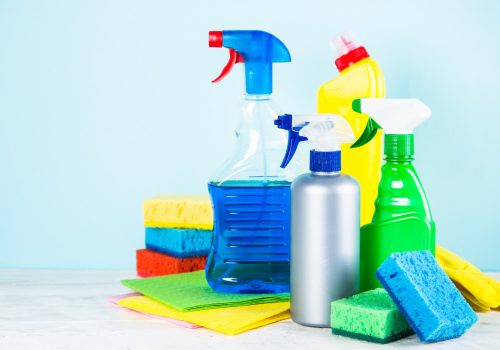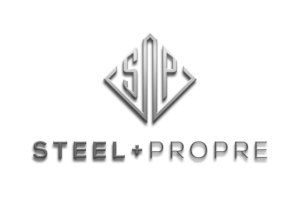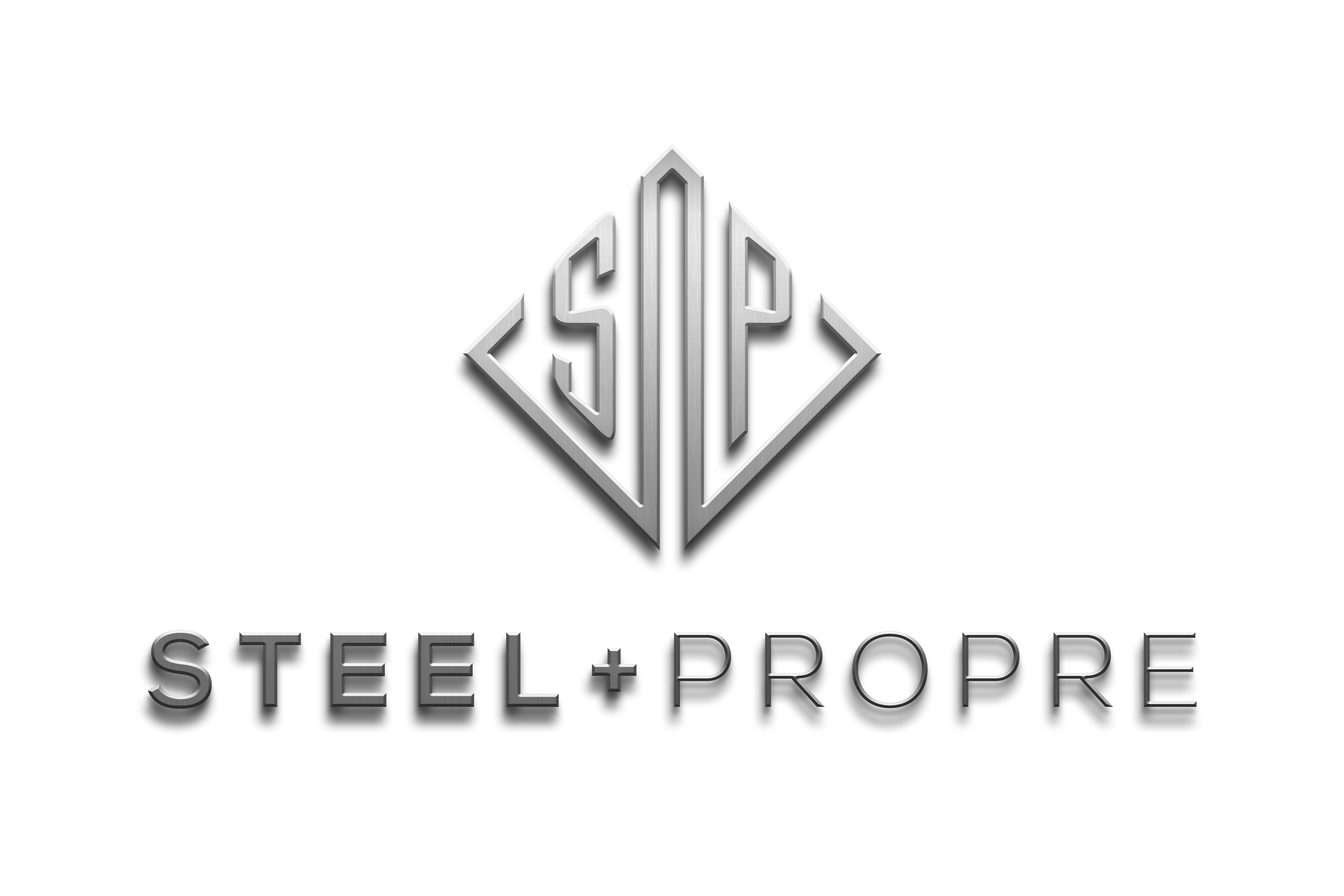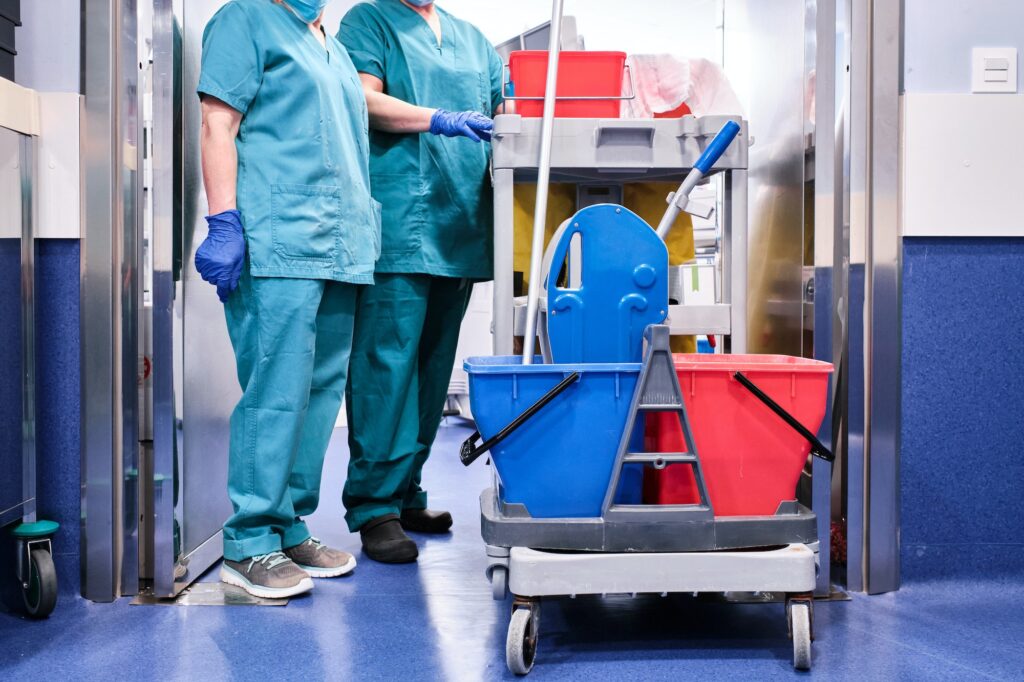The Science of Cleaning: Understanding How Different Cleaning Products and Techniques Work
We hope to educate you and give you an in-depth understanding of the different cleaning products and how they each work differently depending on their application and desired result. Furthermore, we’ll also teach you all about safe cleaning practices and advice that will help you stay safe while tackling any messy job.
Different Types of Cleaning Products
Hey there! Are you confused about the multitude of cleaning products on the market? As professional cleaners, we understand the different options and how to use them best to improve your commercial space’s cleanliness. However, we also understand that all the different options can leave you really confused. Let’s check out:
- To start, we have surface cleaners. They usually contain surfactants (or wetting agents) which allow water to easily mix with dirt and oils, while disinfectants like bleach help tackle germs and bacteria. (1)
- We have degreasers: materials meant to remove grease and oil residue from surfaces. A lot of degreasers are petroleum-based chemical solvents (for example, trichloroethane) or other industrial solvents like citrus extract that quickly eliminate dirt and grease without scrubbing.
- Next, we come to specialty cleaners—the ones designed for specific tasks using specialized ingredients. Carpet cleaners help to rid carpets of mud, dust mites, pet hair, and dander. Another example is silver polish, which is made up of a number of compounds (including abrasives) that restores shine to tarnished silverware. There are oven cleaners containing substances that easily break down food residues in an oven.
As you can see, different cleaning products serve different purposes—it’s all about making sure you use the right one for the job!
Frequency of Cleaning
Another difference between the two types of cleaning services is the frequency of cleanings required. Residential properties typically need weekly or bi-weekly cleanings, while commercial spaces may require daily or weekly cleans, depending on their usage.
For example, a busy office with many employees may need daily cleanings to ensure that all areas remain clean throughout the day. A retail store may only need weekly cleans since fewer people enter its doors every day.

Chemical Agents and Their Properties
Let’s take a look at the power of chemical agents!
- Acids react with bases to form a salt, which makes them great for breaking down dirt and grease.
- Alkalis are stronger than acids and can remove even the most stubborn of grime.
- Solvents dissolve oil and grease easily, making them ideal for cleaning up messes like kitchen oils or sticky surfaces. Common solvents include methylated spirits (denatured alcohol) and acetone.
- Detergents act as surfactants to help lift dirt from surfaces by reducing the surface tension between the dirt and the surface being cleaned. Examples include detergent soaps and liquid dishwashing detergents. (2)
Chemical agents can be used in combination with other cleaning techniques, such as scrubbing or steaming, to maximize their effectiveness for a thorough cleaning. Understanding how different ingredients work will enable us to choose the best one for your particular stain or mess! This helps us provide the best commercial cleaning services in the industry. We take great pride in educating our cleaners so they, with this knowledge, can better understand the best approach to built-up dirt and grime.
The Role of Surfactants in Cleaning
Let’s break down the science of cleaning a little further. Have you ever heard of surfactants? These are the special molecules in cleaning products like detergents, soaps, and shampoos that reduce the surface tension of water so it can better penetrate stains, dirt, and grime.
Surfactants have different properties depending on their composition, and they do more than just reduce surface tension—they also absorb dirt, help suspend it in water, and help rinse off any residue. You’ll notice this effect when you use dish soap to clean up the dirt from a bathtub–the surfactants make it much easier for the dirt to wipe away! (3)
Some brands even specialize in creating custom formulations for specific surfaces or applications. If you’re having trouble removing a difficult stain from a delicate surface, consider looking into specialized cleaning products made with tailored surfactant combinations.
The Importance of pH Levels When Cleaning
When cleaning surfaces, it is important to consider the cleaning product’s pH levels. pH stands for “potential of hydrogen,” and it is a measure of how acidic or basic (alkaline) a solution is.
Why does It matter?
The proper pH level for cleaning can vary depending on the surface being cleaned; for instance, you would use a different product to clean glass than you would use for stainless steel or tile. The wrong product on the wrong surface can cause scratches or permanent damage. Be sure to research the proper cleaning method and pH level for whatever surface you are cleaning. (4)
Tips for choosing cleaning products
The best way to ensure that your chosen product has the correct pH balance is to check its label. Look for an indication of its alkaline or acidic nature —usually abbreviated as “pH” or “alkalinity.” Furthermore, many cleaning products will have a list of recommended things. They may even have a list of things that you shouldn’t use. This is important to ensure that you have the right product for the job.
How Heat Affects the Cleaning Process
You might have wondered why boiling water is sometimes used to clean surfaces. Heat is great for removing tough, stuck-on substances like grease, and it helps to break down the molecules of the dirt, making it easier to wipe away.
But there’s a science behind this, too—temperature affects how the molecules interact with each other. At higher temperatures, the molecules bond less easily, which is what makes them easier to wipe away. This also explains why steam cleaning works so well—those tiny droplets of steam are heated way beyond what you could achieve with just boiling water.
Sometimes heat is combined with detergents and surfactants for an even bigger cleaning boost. Detergents and surfactants help water get into all the nooks and crannies of the surface, while heat helps loosen the dirt’s bond with that surface. This combo makes it easier to wipe away even stubborn dirt and grime!
The Benefits of Steam Cleaning
Cleaning isn’t just a matter of picking up the dirt. It’s a science of understanding the chemistry behind different solutions and techniques used to clean. When it comes to steam cleaning, you may have heard of its magical powers. It works great for sanitizing and cleaning a range of surfaces.
But what exactly is steam cleaning—and why is it so powerful?
What is steam cleaning?
At its core, steam cleaning is simply using hot water as a sanitizing solution. The water is heated and then reaches a boiling point. This is where it will start to turn into vapor (or steam). This vapor can then penetrate deep into surfaces and objects. This allows it to reach areas that traditional detergents can’t. Thus, making it much more effective for sanitizing.
How does steam cleaning work?
Steam vapor works because it’s able to penetrate deeply into surfaces, getting rid of dirt particles, grease, and grime along the way. This process not only helps loosen up dirt but also helps kill germs and bacteria that may be lingering on surfaces. Ultimately, this makes the area cleaner and safer at the same time. (5)
At home, you can use a handheld steamer to take advantage of all the benefits of steam cleaning. However, we utilized commercial steam cleaners that take it to the next level. Our team works with our clients to ensure their cleaning is done properly. Here are some key advantages:
- It kills germs and bacteria without using harsh chemicals
- Penetrates deep into surfaces for deeper cleaning without scrubbing
- Leaves behind no residue
- No need to rinse after use like with traditional detergents
Call Steel and Propre to Get Proper Commercial Cleaning
To sum up, when it comes to cleaning, it’s important to understand how different cleaning products and techniques work. Knowing the benefits of cleaning agents and which cleaning methods are best for different surfaces can help ensure that your surfaces and items stay clean and free of bacteria, germs, and dirt.
Whether you use natural products, chemical-based solutions, steam cleaners, or any other method, you should always remember to refer to the item’s labeling for recommended methods. Finally, always use the appropriate cleaning tools and materials to ensure that your surfaces stay as clean as possible.
With the right understanding and knowledge, you can confidently clean surfaces and items with the best approach for your needs.
However, if you’re looking for a cleaning company that takes care of all your cleaning needs, Steel and Propre is here to help. We can provide you with high-quality cleaning services that will keep your home or business looking its best. Contact us today!
Get a Free Quote
If you’re looking for a commercial carpet cleaning service provider that offers experience, reliability, customized solutions, and environmentally friendly practices, look no further than Steel and Propre. Contact us today to learn more about our services and how we can help you keep your facility clean and well-maintained.
Resources:
(1) https://www.cleaninginstitute.org/understanding-products/science-soap/chemistry-cleaning
(2) https://ignitecleaners.com/what-is-degreaser/
(3) https://www.essind.com/chemistry-of-cleaning/
(4) https://cleanfax.com/the-role-of-ph-in-cleaning/
(5) https://www.achooallergy.com/blog/learning/steam-cleaning-101-top-seven-reasons-to-steam-clean/




